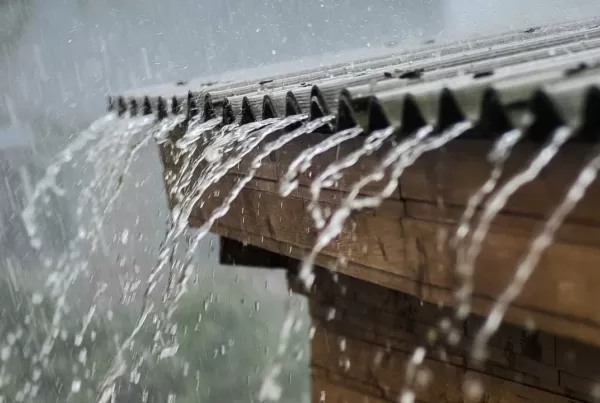Have you ever looked up at the sky during a thunderstorm and wondered or asked yourself do metal roofs attract lightening? The idea of a bolt of lightning striking your home can be frightening, but is it true that metal roofs are more likely to attract lightning? In this article, we’ll explore the science behind lightning and metal roofs, and find out if your roof is really at risk. So buckle up and let’s dive into the electrifying world of lightning and metal roofs!
Metal roofs have become increasingly popular in recent years due to their durability, longevity, and aesthetic appeal. However, there is a common misconception that metal roofs attract lightning, leading many homeowners to question the safety of their homes during thunderstorms. In this article, we will explore the science behind lightning and metal roofs and determine whether or not metal roofs are more susceptible to lightning strikes.
The Science of Lightning
Before we can determine whether metal roofs attract lightning, we need to understand the science behind lightning itself. Lightning is a natural phenomenon that occurs during thunderstorms when a buildup of electrical charges in the atmosphere is discharged. When the electric charge becomes too great, it creates a path of ionized air, known as a stepped leader, which extends from the cloud toward the ground. When the stepped leader gets close enough to the ground, it creates a channel for the electric charge to flow, resulting in a bolt of lightning.
The path of a lightning bolt is not random, and it is not attracted to objects based on their material composition. Lightning strikes are more likely to occur in areas that are higher, isolated, or have a greater electrical conductivity. This means that tall buildings, trees, and metal structures are more likely to be struck by lightning, not because they attract the lightning, but because they provide a path of least resistance for the electrical charge to follow.
Do Metal Roofs Attract Lightening?
Now that we understand the science behind lightning, let’s explore whether metal roofs are more likely to be struck by lightning. While metal is a good conductor of electricity, it is not a lightning magnet. In fact, metal roofs are no more likely to be struck by lightning than any other type of roof. The likelihood of a lightning strike is determined by the height, shape, and location of the structure, not the material it is made of.
It is important to note that a metal roof will not increase the likelihood of a lightning strike, but it may increase the risk of damage if a lightning strike does occur. When lightning strikes a metal roof, the electrical charge travels along the metal surface and seeks the path of least resistance to the ground. This can cause damage to the roof, as well as any electrical or plumbing systems that are connected to it.
Protecting Your Home from Lightning
While metal roofs do not attract lightning, it is still important to take precautions to protect your home and your family during thunderstorms. Here are some tips to keep in mind:
Install a lightning protection system:
A lightning protection system is designed to divert the electrical charge from a lightning strike away from your home and safely into the ground. This system includes lightning rods, grounding wires, and surge protectors.
Unplug electrical appliances:
During a thunderstorm, unplug all electrical appliances and devices, including computers, TVs, and other electronics. This will help protect them from power surges caused by lightning strikes.
Stay away from windows and doors:
Lightning can travel through glass and metal, so it is important to stay away from windows and doors during a thunderstorm.
Seek shelter:
If you are outside during a thunderstorm, seek shelter in a sturdy building or car. Avoid trees, tall structures, and open fields.
Conclusion
Metal roofs do not attract lightning. While metal is a good conductor of electricity, the likelihood of a lightning strike is determined by the height, shape, and location of the structure, not the material it is made of. However, a metal roof may increase the risk of damage if a lightning strike does occur. It is important to take precautions to protect your home and your family during thunderstorms, including installing a lightning protection system, unplugging electrical appliances, staying away from windows and doors, and seeking shelter in a sturdy building or car.
By following these tips, you can help minimize the risk of damage and ensure your safety during a thunderstorm.
It is also important to note that metal roofs have many benefits that make them a popular choice for homeowners. Metal roofs are durable, long-lasting, energy-efficient, and eco-friendly. They are also resistant to fire, rot, and insects, and require little maintenance. Additionally, metal roofs can be made from recycled materials and are fully recyclable at the end of their lifespan, making them a sustainable choice for those concerned about the environment.
If you are considering a metal roof for your home, it is important to work with a professional roofing contractor who can help you choose the right material and ensure that your roof is installed properly. A properly installed metal roof can provide many years of protection and performance, while also enhancing the look and value of your home.
While there is a common misconception that metal roofs attract lightning, the science behind lightning and the likelihood of a strike is determined by factors such as height, shape, and location, not the material of the roof. Metal roofs have many benefits that make them a popular choice for homeowners, including durability, longevity, energy efficiency, and sustainability. To ensure the safety of your home and family during thunderstorms, it is important to take precautions such as installing a lightning protection system, unplugging electrical appliances, and seeking shelter in a sturdy building or car. By following these tips and working with a professional roofing contractor, you can enjoy the benefits of a metal roof while minimizing the risk of damage from lightning strikes.




